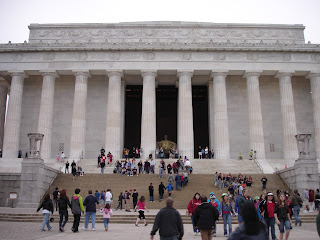Writing a novel has more structure than most creative endeavors. I think it has more procedures than painting or sculpture for example. It is not a spontaneous event that most people think it is. Paul Allen the co-founder of Microsoft said that programming is like writing a novel. I agree with him. I have never written a novel but I have done a fair bit of programming. Programming has clear rules and steps which depend on the computer language. One cannot proceed to the next step if one has not finished a dependent component. But it is more structured than novel writing although it is a creative expression in a highly abstract language (C++, Basic, etc.) whose final product is working software. One does not appreciate the computer language when one looks at the code but in the elegance of the working software. In other words, one does not appreciate the architect’s blueprints but the finished house.
Writing a novel requires an expertise in syntax in a sense similar to computer language. The program will not work if the syntax is wrong. Similarly, the novel will not work if the basic sentenced structure is incorrect. There is poetic license but it can only go far. Creative endeavors that push the boundaries of syntax such as James Joyce ‘Finnegan’s Rainbow’ or ‘Ulysses’ are great works but are only enjoyed by literary elites. It is the sound that the work makes that count when one ‘reads’ his works. These works are inventive and don’t follow accepted syntax but effective if listened to. At least by the ordinary folks who can appreciate a performance as compared to reading a complex book. Now watching a movie of the novel is even better. Hence, to be a good writer one must master syntax or sentence construction as the basic foundation. One can make his own syntax if one has risen above the level of the ordinary.
After mastering sentence construction and syntax, one proceeds to the functionalities or workings of the story. In software, this means the feature set, functionalities, performance, stability, software design and so on. For novels, this means character, plot, internal coherence, point of view, and atmosphere and so on. It is the vision thing when one visualizes how the story should proceed or how the software should work. Great works arise if one has an insight on a feature that would make the product great. For example, the broadcast feature or profile page or wall in Facebook. Similarly the way author John le Carre’ constructs his intricate stories in say ‘Our Kind of Traitor.’ The elements of plot, story, character and point of view all come into play. The concept of internal coherence is also important to achieve believability (or suspension of disbelief) as explained by Mario Vargas Llosa with the use of elegant tactics like ‘Chinese Boxes’ or ‘Communication Vessels.’
It is the functionalities or workings of the story where one’s structured creativity is exercised. This is the part that is missing for most would be writers. Crafting sentences is the first part but progressing towards the vision thing is the difficult part. Being able to visualize how the story or software should work is the challenge. The creative visualization of a story is sometimes achieved in day dreams. The challenge is writing the story down in prose that is exactly right. I guess daydreaming is a sort of exercise of structured creativity but it cannot be substitute for actual creative writing experience. In fact, working on software means constantly testing, building, revising, debugging and assessing the final product during successive builds. Only if the software is working based on one’s specification can it be released to the public. Drafting a novel is also the same endeavor although in a different light.
Constantly working on the novel with its various drafts and re-writing does not focus on crafting good sentences because it’s a given. It is expected to be at a high level already. So daydreaming and its constant revisions are done until an internal coherency is reached, it’s the act of structured creativity. To be sure it is the exercise of the imagination as well as incorporating the knowledge one has gained by deep reading and experiencing life. Changing one’s mindset into thinking that writing a novel is like conscious day dreaming and writing software makes it more achievable. Like Paul Allen, comparing writing to software development is a good way to reframe the challenge especially if one has programing experience. The term ‘structured creativity’ is understood if brought under a more understandable framework. It di-mystifies the creative process and brings it into a more constructive mindset understood by common folks.
Yesterday was another hectic day. I was nominated president of my Toastmaster club, made a short speech, ran a few software tests, wrote e-mail and went to an amusement park for the company outing. In the park, I tried go kart racing, laser tag and mini-golf. After the afternoon fun, I went back to the office to address a small issue from the warehouse, went to the library and borrowed some movies, filled the car with gas and went to the gym where I jogged for 50 minutes, had a dry sauna and shower. When I got home, I watched a documentary, read chapters in a book and an article in Time magazine. I finally got to bed at around 11 pm. That night looking back at the events of the day, being elected president and some events at the park kept me awake. I realized that being in this position will be a new challenge for me. One needs to be open and forthcoming to be successful in a leadership position. It’s another task away from my comfort zone. I guess to be successful is to be creative too.



No comments:
Post a Comment